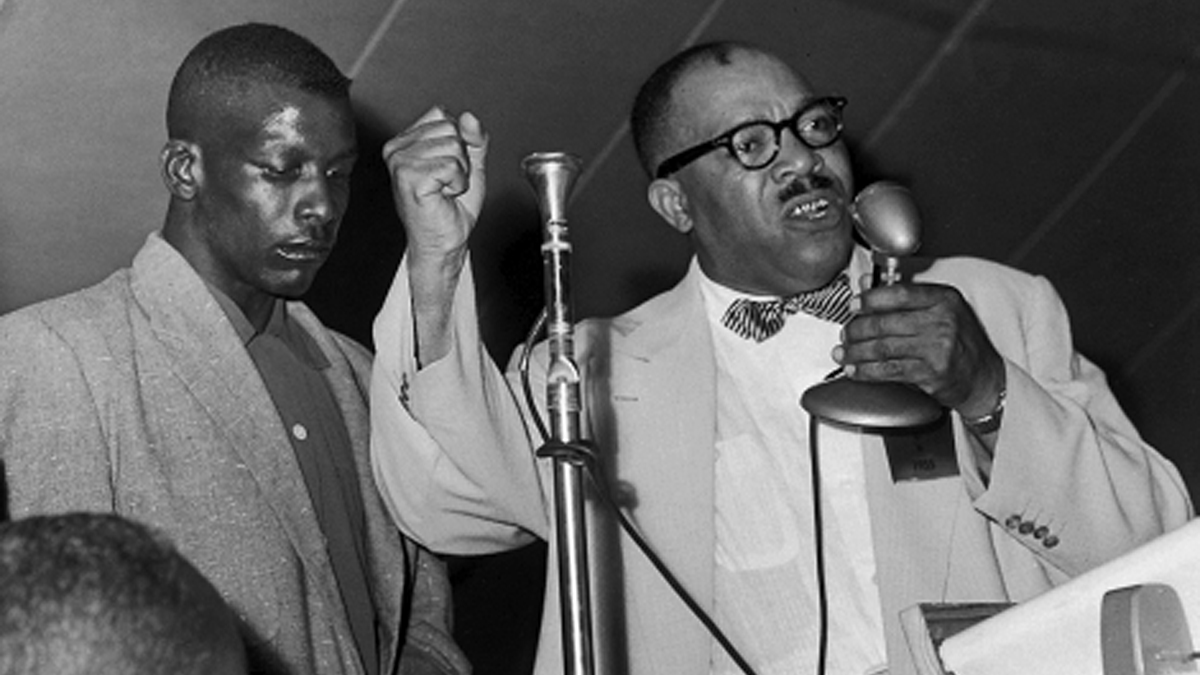As we mark Dr. Martin Luther King’s birthday on Jan. 15, we should acknowledge the unsung contributions of earlier activists. Few deserve recognition more, or have received less, than Dr. T.R.M. Howard.
The two men crossed paths right before one of the most consequential events in American history. In November 1955, King, then a nationally unknown 26-year-old pastor, hosted a fiery speech by Howard to an overflow crowd at King’s Dexter Avenue Baptist Church in Montgomery, Alabama. The speech dealt with the recent murder of Emmett Till. In the audience was Rosa Parks, whose famous arrest for refusing to move to the back of a bus came only four days later.
By that time, Howard had long been a civil rights legend. Born poor in Murray, Ky., in 1908, he had graduated medical school with the help of a local white doctor who recognized his talents and grit. In 1941, Howard became chief surgeon of the all-black Taborian Hospital in Mound Bayou, Miss., a facility built without tax dollars and supported primarily through the membership dues of a black fraternal society. The hospital gave affordable healthcare to thousands of sharecroppers and tenants.
Howard’s shrewd investments included a thousand-acre plantation, a home-construction firm, an insurance company, a restaurant with a beer garden, the largest swimming pool for blacks in the state, and even a small zoo. He fearlessly fought segregationists with his Regional Council of Negro Leadership, a combination civil-rights and pro-self-help organization. He topped a local Ku Klux Klan death list and was once smuggled out of a civil rights meeting in a casket. Although he lived at Jim Crow ground zero, his “in your face” public speeches included a joke about the late Theodore “the Man” Bilbo (the most notorious racist in the U.S. Senate) having just sent the governor a message from hell. At the same time, Howard could also be a confident and charming diplomat.
Howard gave the eventually martyred Medgar Evers his first post-college job and was pivotal in introducing Fannie Lou Hamer to the movement. A decade after she met Howard, Hamer made network news at the Democratic National Convention protesting the seating of Mississippi’s all-white delegation.
Howard’s civil rights rallies during the early 1950s drew crowds of 10,000 and not only provided voter information, but also gave a great show, including gospel singers such as Mahalia Jackson. A kind of civil rights P.T. Barnum, his style defied the Gandhian stereotype. He was an elegant dresser, bet regularly at the horse track, and was not afraid to display his wealth. A Republican beginning in 1956, he championed self-help rather than dependence on the government and deterred potential white racist attacks with a small arsenal that included a Thompson submachine gun.
In 1952, Howard’s Regional Council organized a boycott against service stations that barred blacks from the restrooms. It distributed 50,000 bumper stickers featuring the slogan, “Don’t Buy Gas Where You Can’t Use the Restroom.” Taking such a stand was risky even for 1952, but it ultimately succeeded (by the standards of the time) when gas stations began to install restrooms for black patrons.
By August 1955, Howard was rounding up witnesses in the Emmett Till murder case. The discovery of Till’s mangled body and the acquittal of his accused killers led to national revulsion. Fearful for his family, Howard moved to Chicago in 1956 and went on to a successful medical practice. He visited Jackson, Miss., in 1963 to give the eulogy at the memorial service of the assassinated Medgar Evers, pointedly warning (with King in the audience) that “the neck is getting tired now” of turning the other cheek.
Howard’s role in the Till case was to have lasting consequences, including, quite possibly, the Montgomery Bus Boycott. Rosa Parks later reported that she was thinking of Till, a focal point of Howard’s address in that city, when she made her decision to protest the bus-seating restriction. Just as importantly, he was not only a mentor to such icons as Evers and Hamer, but his investments in businesses, communities, and healthcare helped to build a firm foundation for the mass civil rights movement that flourished in the 1960s.











